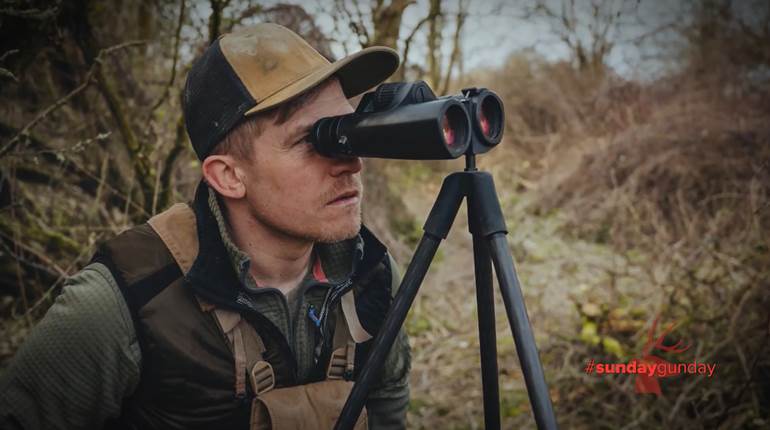
Hitting targets out to one mile takes the extraordinary application of skill and precision. Although an enormous amount of credit goes to the rifle and shooter, it would all be lost if the ammunition didn't portray the same adherence to consistency. This includes the powder charge, brass, primer and especially bullet. Projectile engineering is a daunting task that might just overshadow the summation of all other components involved in ammunition production. For that reason, the best projectiles come from companies that concentrate their efforts solely on this critical component.
Federal Ammunition is great at doing many things, such as keeping US consumers, law enforcement and even the military supplied with high-quality rounds for every given task imaginable. However, maintaining an enterprise like this requires a broad scale of attention, obviously limiting its efforts on the development of any particular component. The Minnesota-based company realized this as far back as 1977 when it spun off the Federal Premium line, featuring astonishingly capable third-party projectiles. While some manufacturers might scoff at what they consider competition, Federal saw the circumstance as a means of developing both companies' brands. Through these partnerships, it could offer ammunition loaded with projectiles that were only previously available to the handloader, benefitting both parties, not to mention the consumer. As this formula undoubtedly worked, Federal continues this tradition today and has expanded the lineup to include a plethora of products from Berger, maker of some of the finest precision bullets on the market.
In this piece, I dialed in on the 130-grain offering of the Gold Medal Match 6.5 mm Creedmoor round, featuring a Berger AR Hybrid OTM Tactical Rifle bullet. My interest in this ammunition started with the very bullet that Federal chose for the build. Berger's typical bullets are very sensitive to seating depth. Although they win matches worldwide, they only yield that performance for the rifle for which they were explicitly tuned. The hybrid line seeks to change that through a blended secant/tangent ogive. This profile mash-up retains the best ballistic properties of both curvature styles while making them less reliant on their distance from the lands. Furthermore, they are built to dimensions that allow them to be loaded to AR-magazine length, making them equally suited for a bolt-action as they are for a gas-operated gun. Since factory ammunition needs to perform well in a wide variety of firearms, it's almost as if Berger designed this bullet specifically for this application.
While the bullet shoulders the heaviest portion of the accuracy equation, it is only one link in the chain that also includes powder, primer and case. Each of these components receives special consideration, particularly the brass. In a recent move, all Gold Medal Match cases are made to accept small primers, a change that dramatically cut down standard deviation, in many cases by half. Regardless of its destined product, all Federal cases are checked for consistency after each forming process, sometimes resulting in more than 20 separate inspections before it sees a primer, powder charge and bullet. Upon completion, the cases are sorted to an even higher discrimination rate before they are considered worthy of becoming the base for Gold Medal Match ammunition.
Primers receive a similar treatment, however, in fewer steps. Although simpler, the process does have a few areas of variance that are addressed, namely cup thickness and quantity of compound. While rare, the metal sheets that primer cups are punched from can vary slightly in thickness, which changes the way they transfer the blow from the firing pin to the explosive mixture. This change in pressure will alter ignition, which will vary how the powder burns. The result is reflected in a velocity deviation that shows up on a target as vertical stringing. A variance in the amount of primer compound will cause the same effect. Therefore, a simple weighing and separating of the final product segregates out a small group that is perfect for precision applications. This is the same primer available to the handloader under the Gold Medal moniker, and I can speak to its consistency firsthand. This brings us to the powder charge, and while I would like to tell you more about it, Federal keeps that information under lock and key. All that we know is that it is "specially formulated," which doesn't tell us if it is available to the consumer under a brand name or if they do something special in-house. I can say this, though, whatever it is, it works.
Having previous success with the cartridge out to 1,000 yards, I pondered if this load was up to the task of hitting at a mile. Although 6.5 mm Creedmoor isn’t truly built for this distance, if carefully loaded and placed in the hands of a skilled shooter, one can expect a moderate level of success. Federal’s Gold Medal Match line is built to standards so exacting that, in the right rifle, it can be stretched to distances that the given cartridge isn’t commonly capable of. Touching a mile with a 6.5 mm Creedmoor would take everything the round had, though, so it was time to see if Federal rose to the task, or left this to sit among all the other everyday offerings.

My travels took me to Paul Nelson Farm in South Dakota, where they have recently put together a long-range shooting school taught by Joshua Cluff of H-S Precision. Josh has decades of shooting experience under his belt from his work with the legendary rifle maker and his personal hunting and competitive ventures. As a result, he has helped thousands of students achieve mile-long success, and I was sure I would be no different. Upon arrival, I realized that I was within the fences of an establishment well above anywhere I have ever laid my head. After settling in and seeing the range, our group of 12 sat down for an intimate dinner that was capped off by an impromptu speech from another unannounced guest, South Dakota Gov. Kristi Noem. After professing her allegiance to the Second Amendment and offering up her upcoming plans to further our freedoms, we retired a bit on the early side to rest up for what was going to be three enthralling days on the range.

Day one entailed learning about our rifles and gathering preliminary information to feed our ballistic calculators. The firing line had 12 rifles on it, consisting of a Sig Sauer CROSS-PRS, a Ruger Precision and ten H-S Precision HTRs in various stages of barrel wear. Each rifle was fitted with a Silencer Central Banish 30 suppressor and a high-magnification optic. Other than that, there weren't any special concessions to optimize their use with the Federal 130-grain load we were testing. For this reason, you can imagine my amazement when each rifle produced sub-m.o.a. groups during the 100-yard zeroing procedure. Furthermore, we clocked velocity averages on all ten of the HTRs and found that the greater majority were capable of putting together 10-shot strings with single-digit SDs.

As the day progressed, we engaged targets out to distances of 1,153 yards with precision that rivaled nearly any of my handloads. However, unlike my gun-specific custom ammunition, this level of accuracy was repeated down the entire firing line. At this distance, a shooter can see the effects of aerodynamic jump from a present crosswind, and a quality ballistic calculator can provide an accurate fire solution to put a round on target. For my money, this is the true test of factory ammunition's consistency, as it needs to retain its predictability throughout these conditions to be useful. With impunity, each shooter punched in the current wind conditions and placed either a first or second-round hit, confirming what I already suspected; Federal makes one heck of a match round. This exercise ended the day and prepared us for the next morning's activity, a prairie dog hunt in high wind.
After a heavy breakfast, we headed to a nearby dog town to help cull the population of these destructive, infectious vermin. Using a rangefinder, we were able to confirm each target's distance to within one yard and laid down precise fire out to 380 yards. While this is substantially closer than what we shot the day prior, it's essential to realize that the average prairie dog is about the size of a grey squirrel, and we were shooting with a full-value 21 MPH wind. Again, this ammunition rose to the occasion, as in most cases, they either struck flesh with the first trigger pull or were repeatable enough to apply a correction for a second-round impact. I also must report that although not intended for hunting, they were plenty effective on the rodents. After racking up several dozen pelts, the group headed back to the lodge to true up our data in preparation for day three: the mile shot.

Our final day began with the long-awaited one-mile engagement. Using our ballistic apps, each participant dialed in the recommended come-up and stood by for their turn. As you might expect, each calculator spits out a different value based on the velocity the round was pulling from each unique barrel. Predictions varied greatly, even within the same rifle type. This demonstrated the importance of a proper velocity measurement and how much damage a sloppy SD can have on accuracy at extended distances. Invariably, each of us got a shot on target, but as expected, it took 3-4 rounds to score a hit on average.

All in all, I thought this was pretty good being that we were dealing with an 18 MPH gusting wind. Learning from everybody else's wind call, I was able to score a third-round hit and, in my excitement, sent a second in rapid succession that landed just inches away from my first impact. Closer target inspection revealed that every bullet, except for one that skipped in, struck head-on. This tells us that even at a mile, this load is still flying as straight as it did when it left the muzzle.
We ended the trip with a host of marksmanship games that showed us that we could expect handloaded performance out of the Federal Premium line. Through dynamic-wind calls and multiple target engagements, I grew a deeper appreciation of just how far factory ammunition has come. I even debated switching my handload over to the 130-grain Berger so I could substitute in pre-made fodder when time wouldn't allow me to get to the bench. Above all, the entire experience showed us the value of teamwork. Whether between two manufacturers or a shooter/spotter duo, together, we can achieve great things. This just might be my favorite theme in shooting sports.











































